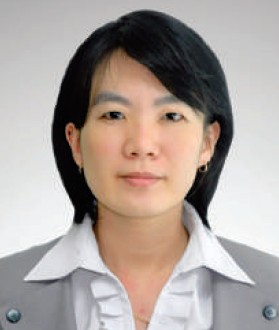Potential Factors of Medical Specialist Allocation in a Private Hospital Network in Thailand: A Modified Delphi Study
Main Article Content
Abstract
OBJECTIVES: Medical specialist allocation is crucial for achieving equitable access to specialized care. Given the scarcity of data from the private sector, this study aimed to identify potential factors of medical specialist allocation within the largest private hospital network in Thailand.
MATERIAL AND METHODS: For standardization and comparison, based on the identified key point, the modified four-round Delphi study together with expert interviews from both public and private sectors were used. A total of 43 top executives from 32 hospital representatives of the Bangkok Dusit Medical Services (BDMS) participated by responding to a 5-point Likert scale for ranking the item that could influence the allocation of medical specialists. The items with interquartile range (IQR) of < 1.5 and mean values > 4 were considered as potential factors.
RESULT: Thirty-five out of 46 factors were statistically significant and were identified as potential factors of medical specialist allocation. Of the 35 factors, 6 potential factors were considered as the most affected potential factors of medical specialist allocation: 1) health need of the population, 2) organization’s mission, 3) organization’s Hoshin, 4) organization’s strategy, 5) complexity of the patients, and 6) severity of the patients.
CONCLUSION: Six factors that might influence the allocation of medical specialists were identified and could be useful for medical allocation in a private hospital network.
Article Details
This is an open access article distributed under the terms of the Creative Commons Attribution Licence, which permits unrestricted use, distribution, and reproduction in any medium, provided the original work is properly cited.
References
2. Kanchanachitra C, Lindelow M, Johnston T, et al. Humanresources for health in southeast Asia: shortages, distributionalchallenges, and international trade in health services. TheLancet 2011,26;377:769-81.
3. Suwannaset W. The Perspective of HR Managers regardingOrganizational Readiness for the AEC 2015 : The Study ofPrivate Hospitals in Chonburi. HRD J. 2013;4:48-59.
4. Joint Commission International [internet]. USA: JCIAccreditation Standards for Hospitals, 5th Edition [cited 20152 Mar 2015]. Available from: http://www.jointcommissioninternational.org/jci-accreditation-standards-for-hospitals-5thedition/
5. Genc KY. Environmental Factors Affecting HumanResources Management Activities of Turkish Large Firms.Int J Business Management 2014;9(11).102-22.
6. Salsberg E, Grover A. Physician workforce shortages:implications and issues for academic health centers andpolicymakers. Acad Med 2006;81(9):782-7.
7. Wibulpolprasert S. Inequitable distribution of doctors: Can itbe solved?. Hum Resour Health 1999;1:2-39.
8. Jitapankul S. Health behavior in old age.Bangkok : NationalHealth Foundation.2000.
9. Bureau of Policy and Strategy. Ministry of Public Health.Health Resources Report. 2015.
10. Kalisch BJ, Friese CR, Choi SH, et al. Hospital nurse staffing:choice of measure matters. Med Care. 2011;49(8):775-9.
11. Mark BA, Salyer J, Harless DW. What explains nurses’perceptions of staffing adequacy? J Nurs Adm. 2002;32(5):234-42.
12. Yang CM, Reinke W. Feasibility and validity of InternationalClassification of Diseases based case mix indices. BMC HealthServ Res. 2006;6(125):1-10.
13. Radu CP, Chiriac DN, Vladescu C. Changing PatientClassification System for Hospital Reimbursement inRomania. Croatian Med J 2010;51(3):250-8.
14. Macmillan T. The Delphi Technique.paper presented at theannual meeting of the California Junior Colleges AssociationCommission on Research and Development. 1971 (3 May1971). Monterey, California.
15. Claudio P. Severity of illness in the case-mix specification andperformance: A study for Italian public hospitals. J HospitalAdministration 2014;3:23-33.
16. Smetana GW, London BE, Bindman AB, et al. A comparisonof outcomes resulting from generalist vs specialist care for asingle discrete medical condition : a systematic review andmethodologic critique. Arch Intern Med 2007;167(1):10-20.
17. Suphanchaimat R, Wisaijohn T, Thammathacharee N,Tangcharoensathien V. Projecting Thailand physician suppliesbetween 2012 and 2030: application of cohort approaches.Human Resources for Health 2013;11(3):1-11.
18. Jovic E, Wallace JE, Lemaire J. The generation and gendershifts in medicine: an exploratory survey of internal medicinephysicians. BMC Health Services Research 2006;6(55):1-10.
19. Jacobson CC, Nguyen JC, Kimball AB. Gender and parentingsignificantly affect work hours of recent dermatology programgraduates. Arch Dermatol 2004 Feb;140(2):191-6.
20. Buchan J, Dal Poz MR. Skill mix in the health care workforce:reviewing the evidence. Bulletin of the World HealthOrganization 2002 07/30;80(7):575-80.


